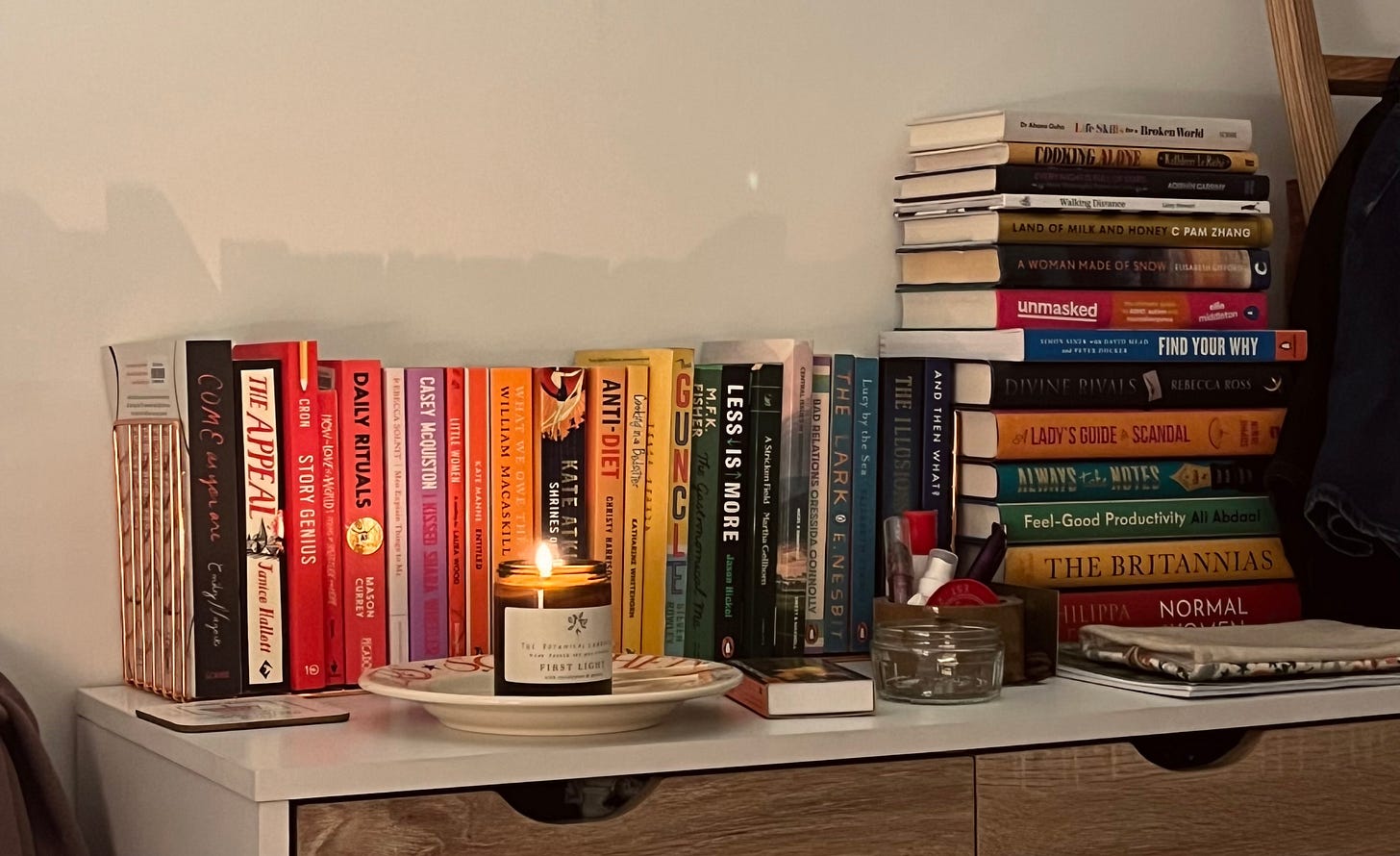The Soft Animal of my Body
A repost from January as the weather turns
Hands in the air - I’m deep in academic-essay-crisis mode and the weather outside is grim, so I’m bringing you a repost from this January, when I wrote about burrowing into comfort for the winter. Speak to you next week <3
I was all ready to continue last week’s treatise on fun (I can’t think of many less-fun words than ‘treatise’, can you?), but the days after this week’s trip to London had me in full-on goblin mode, recovering. Or, to make it sound more romantic (because I’m always going to romanticise anything), it had me turning my bedroom into a hibernacle, and giving the soft animal of my body what it needed.
That phrasing, of listening to my body as you would a much-loved fellow creature, comes from Mary Oliver’s gorgeous poem Wild Geese, which I’ll copy here for those of you part of today’s Lucky 10 Thousand.
Wild Geese
You do not have to be good.
You do not have to walk on your knees
for a hundred miles through the desert, repenting.
You only have to let the soft animal of your body
love what it loves.
Tell me about despair, yours, and I will tell you mine.
Meanwhile the world goes on.
Meanwhile the sun and the clear pebbles of the rain
are moving across the landscapes,
over the prairies and the deep trees,
the mountains and the rivers.
Meanwhile the wild geese, high in the clean blue air,
are heading home again.
Whoever you are, no matter how lonely,
the world offers itself to your imagination,
calls to you like the wild geese, harsh and exciting –
over and over announcing your place
in the family of things.
And a hibernacle, you ask? It’s the place where an animal hibernates. One word for a greenhouse in Spanish is un invernáculo, so you see the etymology coming through strongly: a hibernacle is a safe, warm place, that shelters you from the outside world. It’s also the name of the current focus of the Small Ways To Live Well podcast from The Simple Things magazine, where Editor Lisa Sykes and Wellbeing Editor Becs Frank are looking at how to survive - and thrive - through winter.
I couldn’t talk about getting through winter without referring to Katherine May’s wonderful book Wintering (ad - affiliate link), which is about the idea that life - like the year - has natural seasons of rest along with its seasons of growth. For some practical, Scandi, advice on getting through the darkest months of the year, I also have to mention Helen Russell’s The Year of Living Danishly (ad - affiliate link). It’s inspired by the Danish idea of hygge, and by Sophie Lucido Johnson’s advice earlier this week, that when I got up this morning, I chose to light a candle and luxuriate in the time I had to wait before it was light enough to go out for my run.

My current read is a magical, historical, sapphic, murder mystery, set on an ocean liner (feel free to go back and read that description again), and loving it. If that description whets your appetite: thank me later.
Want some food in your winter nest? I published the second dish of my Simple Good Food series this week: SAUSAGES.
In December, I read Dr Devon Price’s book Laziness Does Not Exist, which had been sitting on my Kindle for almost two years. Price is incredibly candid about the damage we do to ourselves by not taking breaks, and the need for rest. Even so, though, I found myself wondering aloud yesterday whether I was recovering, or being lazy. Productivity culture has so much in common with the other harmful ways we’re told to judge ourselves, what we do, and who we are. I don’t have any of the answers - I just want to say: I’m in this, just as much as anyone else is, no matter how much I might seem like I have it figured out.
(And in case you’re thinking that it’s not normal for an almost-30 year old to need nearly 3 days recovering after two busy work days… I’m on it, and have some medical tests lined up).
(October-Lily chiming in - yes, it turned out that I’m hypothyroid, to no-one’s surprise. I still have to manage my energy and fatigue carefully, but the medication really helps).
Speak soon,
Lily
PS: The Amazon affiliate links above only work to give me commission if you click through from the Substack app or website, rather than directly from your email program. Other ways to support this newsletter include liking, commenting, and sharing it with a friend who you think might like it. Thanks in advance!

